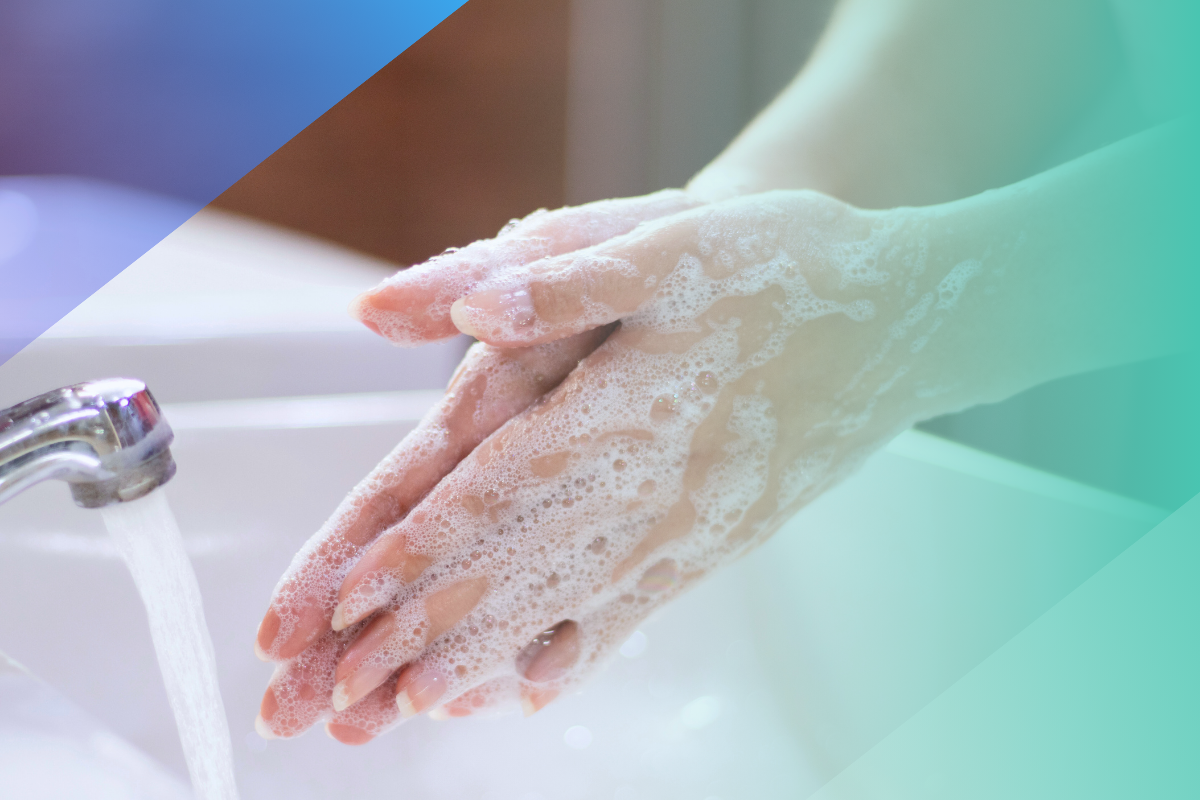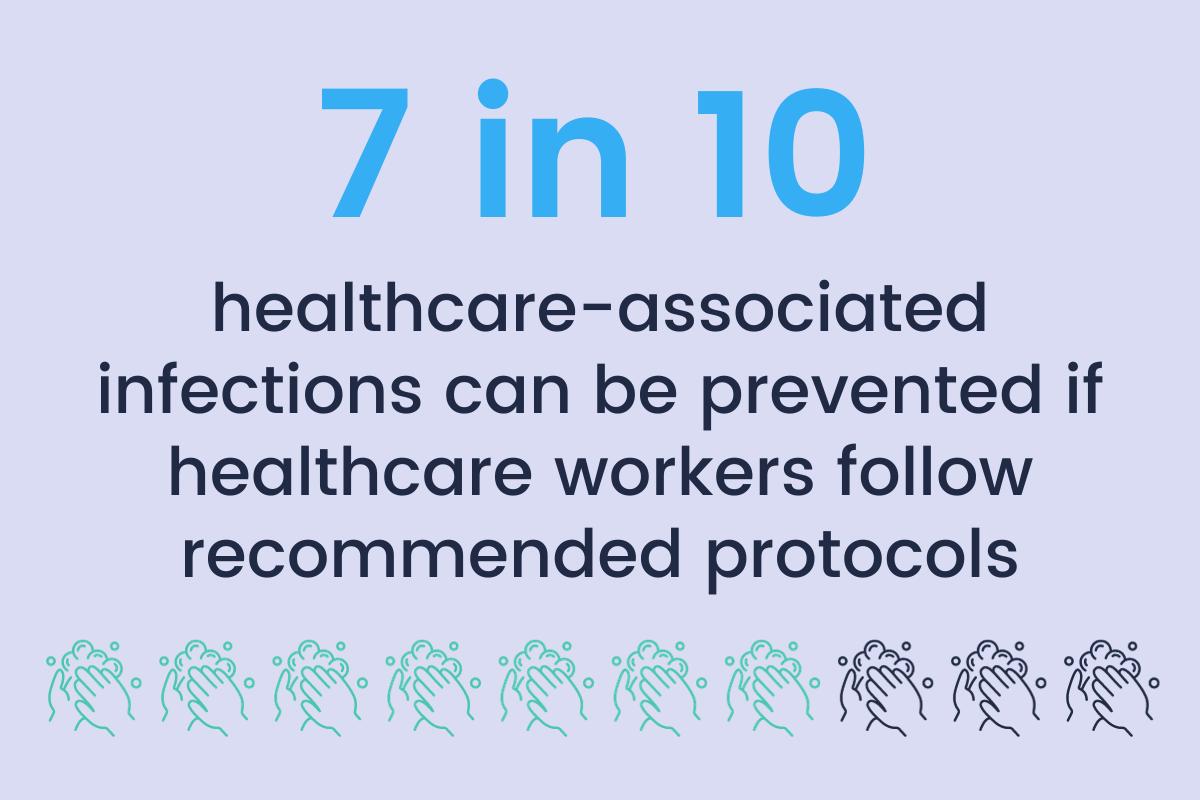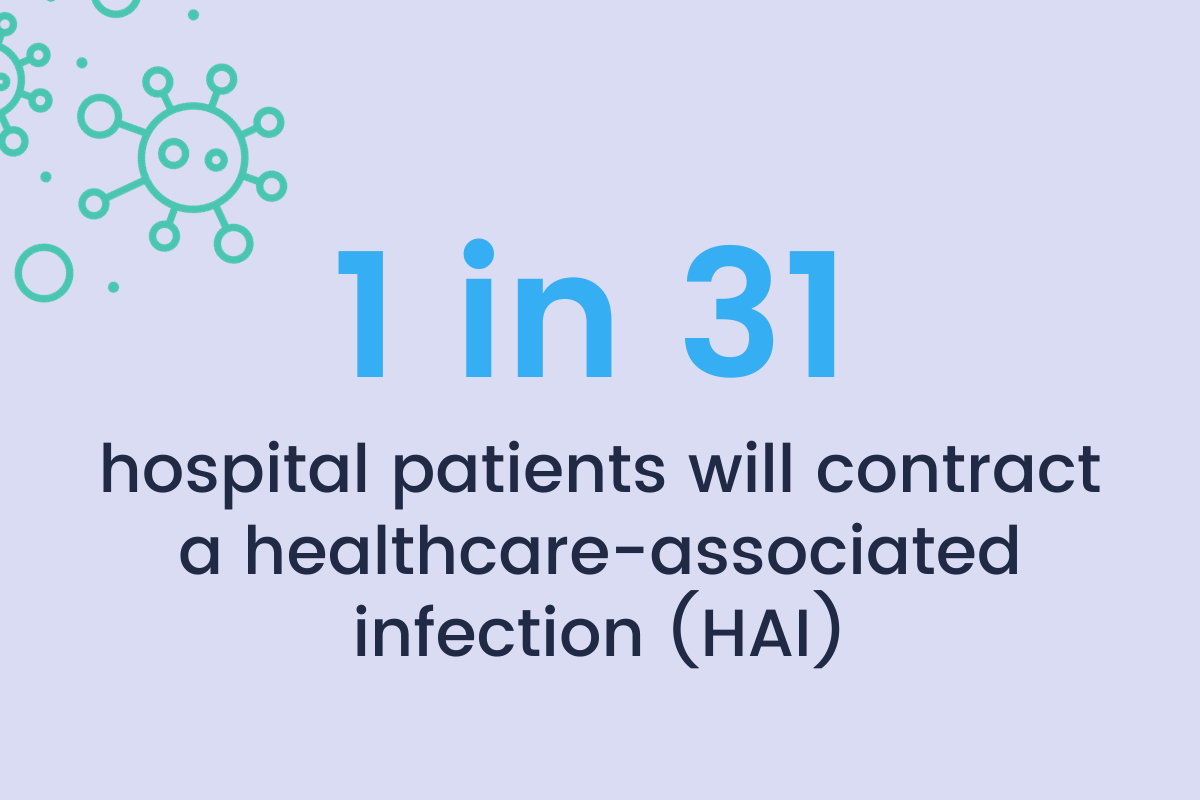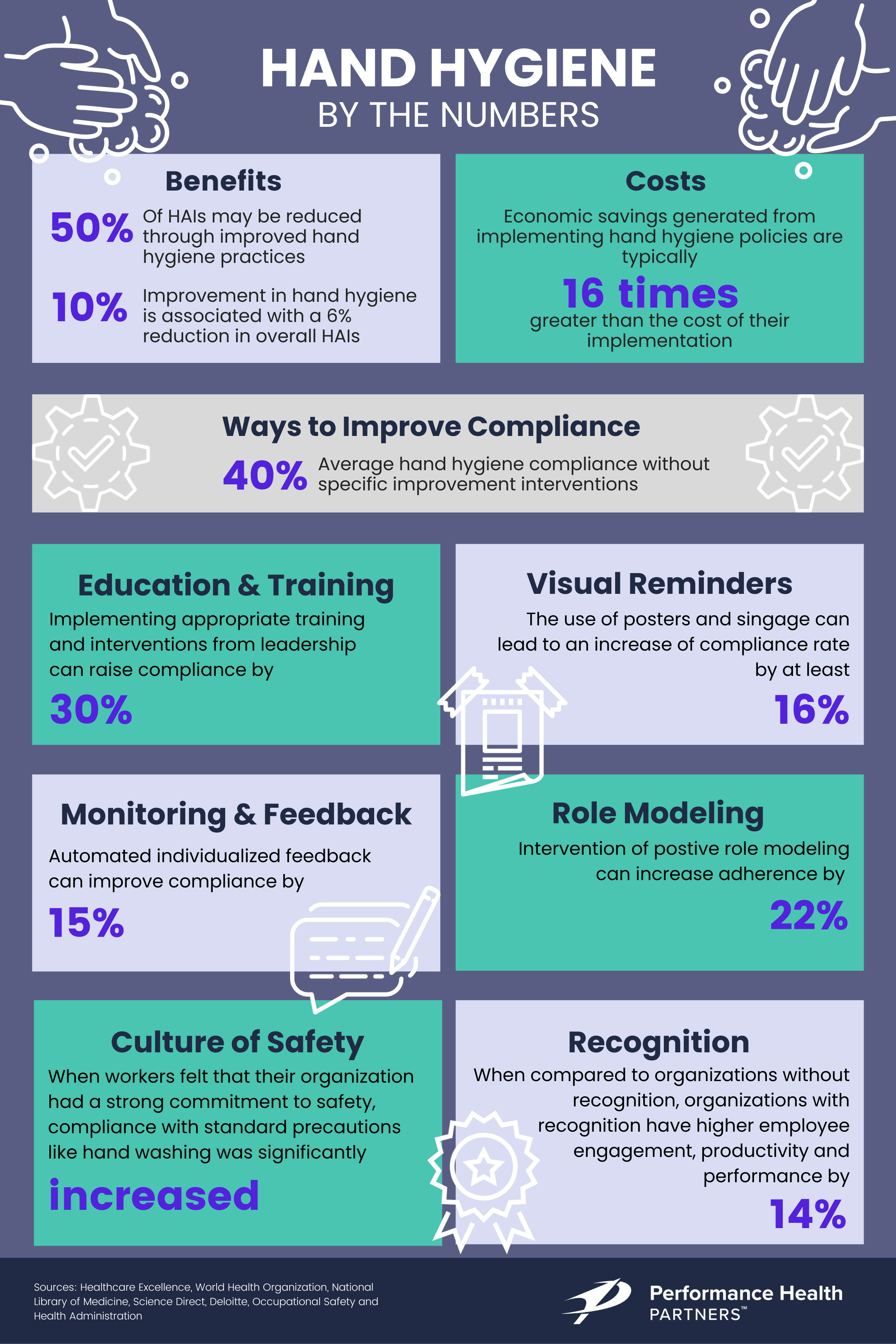4 min read
Tackling the Challenge of Hand Hygiene and Infection Control
Performance Health Partners
July 14, 2023

The Center for Disease Control estimates that on any given day, 1 in 31 hospital patients has an HAI or healthcare-associated infection.1 Up to 70 percent of these infections could be prevented if health care workers followed recommended protocols, including hand hygiene and infection control. 2
Although many HAIs are preventable, their high prevalence leads to harmful effects on patients’ physical, mental, and financial health—and cost billions of dollars in added expenses to the healthcare system.
The Center for Disease Control estimates that HAIs cost between $28 billion - $45 billion in the United States each year.3
Hand hygiene is the simplest and most effective method of preventing the transmission of infection among patients and healthcare workers.4 When properly implemented, clean hands can significantly reduce HAIs and their devastating effects on a patient’s physical, mental, and financial health.
To minimize the risk of patient harm and promote a positive care experience, all healthcare providers should follow a system of effective and timely hand hygiene procedures for infection prevention.
Below are three ways for healthcare organizations to effectively tackle hand hygiene and infection control:

1. Identify Factors Influencing Noncompliance with Hand Hygiene and Infection Control
Studies show that on average, healthcare personnel clean their hands less than half of the times they should.5
Factors influencing noncompliance with hand hygiene protocol vary between organizations and among different levels of professional healthcare workers. Factors can include4:
- Inaccessibility of inconveniently placed sinks and hand sanitizer stations
- Lack of soap at handwashing stations
- Lack of training around hand hygiene protocol, such as using soap; washing all surfaces of your hands for 15 to 20 seconds; thoroughly drying your hands, and turning the faucet off with a towel to avoid touching the dirty surface.6
Healthcare workers may be unaware of proper safety protocols; for instance, many believe that wearing gloves eliminates the need for hand hygiene.5 Additionally, under-resourced facilities may lack sufficient numbers of sinks or easily accessible soap and alcohol-based hand rub solutions to perform effective hand hygiene.5
It is important for healthcare organizations to identify the factors that may be preventing compliance in order to establish a hand hygiene process that promotes patient safety.
A 2014 University of Pennsylvania study found that health workers washed their hands less when their workloads became more intense and toward the end of their shifts when they’re mentally drained.7
2. Put Procedures in Place for Hand Hygiene and Infection Control
Healthcare workers should always be aware of how and when to perform proper hand hygiene. Employees and staff should keep in mind the “four moments of hand hygiene” for determining when to cleanse hands 8:
- Before contact with a patient
- Before performing an antiseptic procedure
- After exposure to bodily fluids
- After contact with a patient
Effective hand hygiene practices for surgical procedures include performing a hand scrub with antimicrobial soap and water. Unless hands are visibly soiled, using an alcohol-based hand rub is preferred for most nonsurgical procedures or other clinical situations. A solution containing 60% to 95% alcohol is the most effective method for killing deadly germs and bacteria on the hands. 9 This solution requires less time and is more easily accessible than handwashing sinks.
Additionally, products should always be stored and dispensed according to the manufacturer’s instructions, so as not to become contaminated with harmful microorganisms. 9
Guidelines published by The Joint Commission in 2023 has updated critical practices in hand hygiene. They include:
- Prioritize hand and fingernail health by banning fingernail polish and gel shellac for surgical staff.
- Choose hand hygiene products based on healthcare professional (HCP) input and manufacturer data to ensure effectiveness against less susceptible organisms.
- Enhance access to hand hygiene supplies by placing them visibly within HCP workflow, with room-specific guidelines.
- Employ diverse monitoring methods to evaluate hand hygiene adherence and assess their effectiveness.
- Foster a safety culture by delivering frequent, meaningful feedback in varied formats.
- Emphasize proper glove use to prevent hand/environmental contamination. Promote immediate hand hygiene after glove removal.
- Minimize sink-associated contamination. Follow construction codes, dedicate sinks for handwashing, and use disposable hand drying options."
Following a system of specific procedures for hand hygiene is critically important for reducing HAIs and improving patient outcomes.

3. Implement a Software Solution
Utilizing a technology solution for hand hygiene and infection control rounding offers a streamlined process for reporting, follow-up management, and tracking trends over time. A central channel for communication makes it easier for care teams to conduct hand hygiene observations across departments, which aids in increasing compliance.
Software solutions are useful for measuring an organization’s current level of hand hygiene performance and directing leadership teams to quickly formulate corrective action plans. Reporting systems also allow for real-time dashboards and analytics, which makes it easier for care teams to identify areas of improvement and reduce the number of healthcare-associated infections that occur in the future.
By practicing effective hand hygiene, healthcare organizations can improve the overall patient experience and get closer to zero harm.

Performance Health Partners Solutions
With increasing rates of healthcare-associated infections affecting patients every day, the importance of proper hand hygiene in healthcare organizations is clear. With Performance Health Partners Solutions, healthcare organizations can access the data they need to improve compliance with safety guidelines while reducing overall patient harm.
References:
- https://www.cdc.gov/healthcare-associated-infections/about/index.html
- https://ihpi.umich.edu/news/hand-washing-stops-infections-so-why-do-health-care-workers-skip-it
- https://www.ncbi.nlm.nih.gov/pmc/articles/PMC9949640/#:~:text=HAIs%20not%20only%20led%20to%20increased%20morbidity%20and,a%20heavy%20burden%20on%20the%20public%20health%20system.
- https://wwwnc.cdc.gov/eid/article/7/2/70-0234_article
- https://blogs.cdc.gov/publichealthmatters/2016/05/what-you-may-not-know-about-hand-hygiene/#:~:text=Studies%20show%20that%2C%20on%20average%2C%20healthcare%20providers%20clean,and%20patients%20are%20at%20risk%20for%20serious%20infections.
- https://www.menshealth.com/health/a19524980/healthcare-workers-dont-wash-their-hands/
- https://www.apa.org/pubs/journals/releases/apl-a0038067.pdf
- https://www.longwoods.com/content/21968/healthcare-quarterly/challenges-of-hand-hygiene-in-healthcare-the-development-of-a-tool-kit-to-create-supportive-process
- https://www.cdc.gov/clean-hands/data-research/facts-stats/hand-sanitizer-facts.html#:~:text=Many%20studies%20have%20found%20that%20sanitizers%20with%20an,a%20lower%20alcohol%20concentration%20or%20non-alcohol-based%20hand%20sanitizers.


